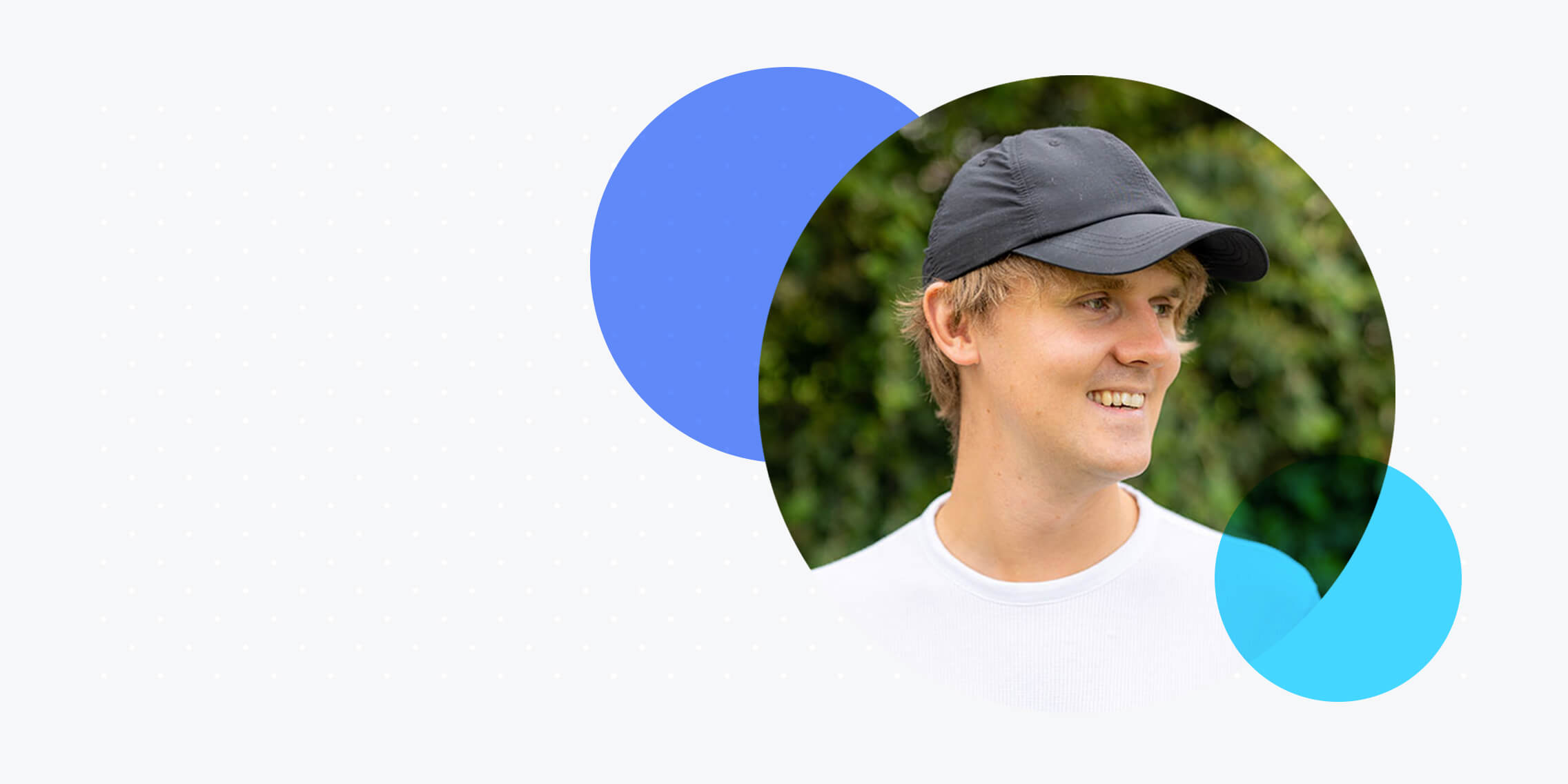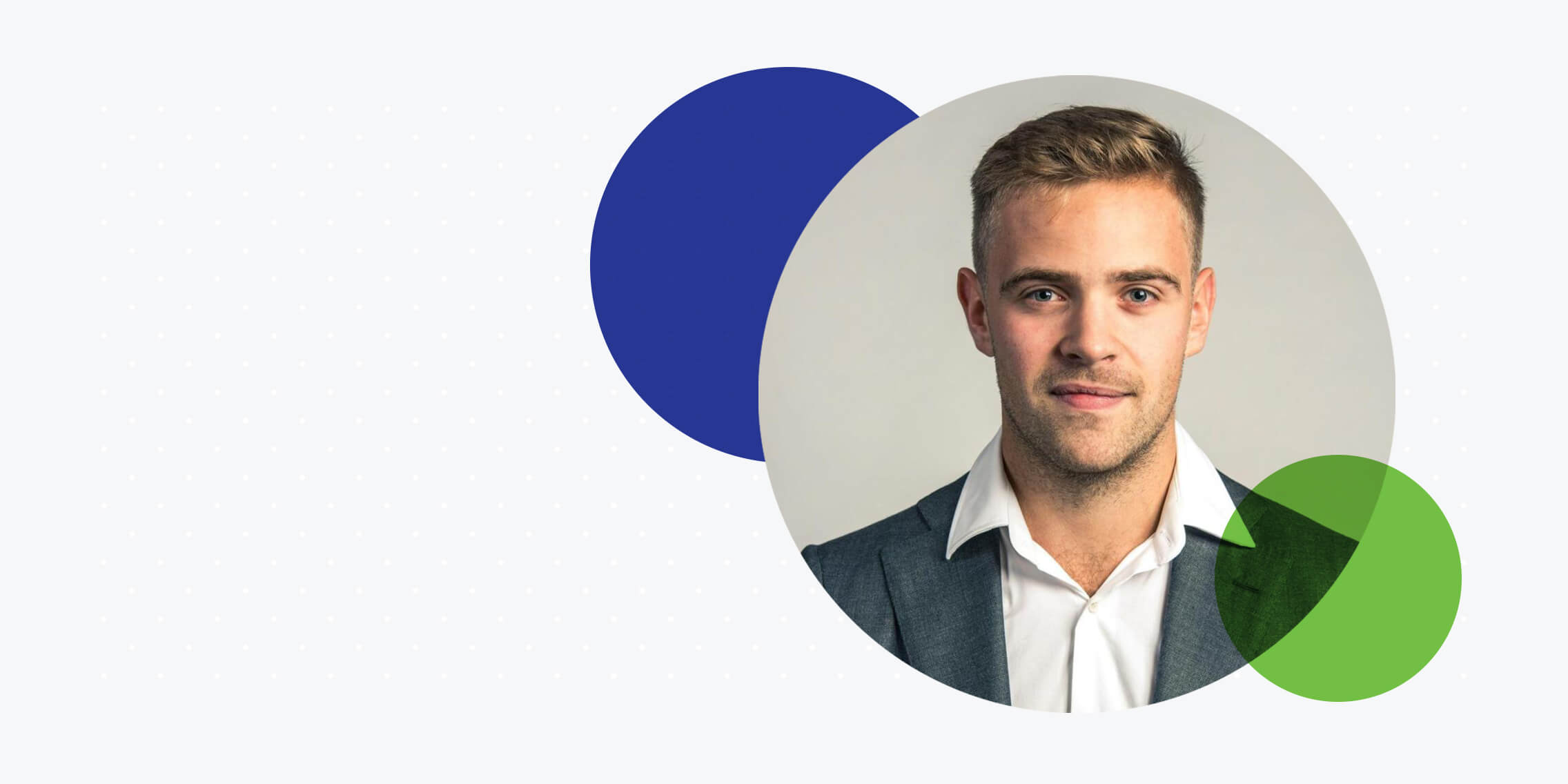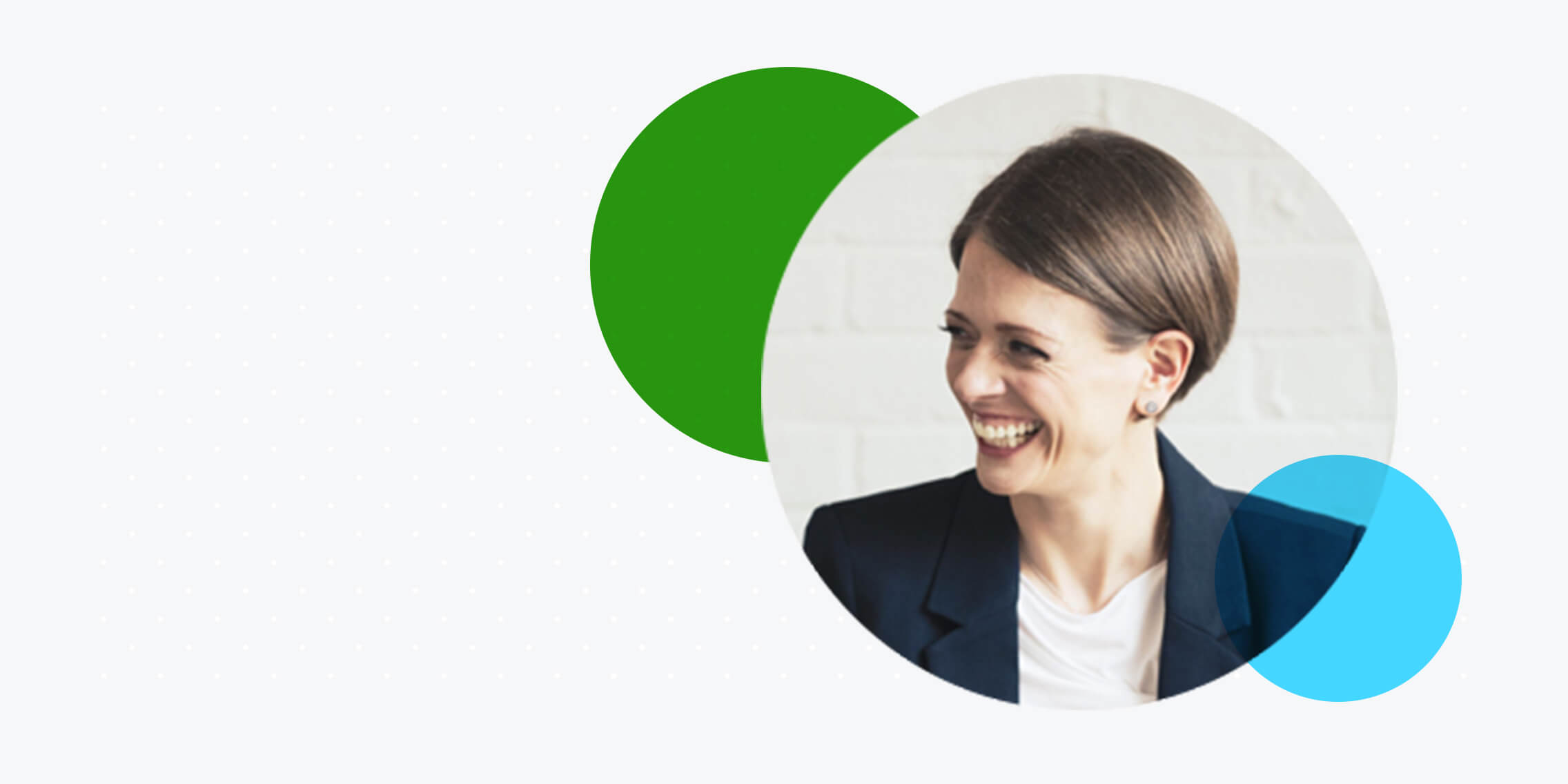After building a carpentry school in a Ugandan slum community, Jonny knew he wanted to work in a role that would make things better for people. After researching in-demand jobs a few years later, he decided UX design was a career path aligned with his passion for creating positive change in the world.
He told us how our courses helped him move from carpentry to UX.
Why did you choose the UX Design Institute?
The UX Design Institute’s curriculum seemed relevant and up to date, that really appealed to me. Plus, I thought employers would like that it was credit-rated by the Glasgow Caledonian University. This set the UX Design Institute apart from other UX courses out there.
It was really important that I could complete the course in my own time. I liked that there weren’t any time frames to complete the courses but suggested paths instead.
How have our courses helped you to get hired?
Having the Professional Diploma in UX Design coupled with the Professional Certificate in Visual Design definitely helped me to get hired. It seemed like lots of companies were looking for UX and UI skills in the job market.
Spending a lot of time on my course portfolio was key to landing a job. I remember going back through the courses when I was working on my portfolio. There was a helpful module at the end of the Professional Diploma that showed you how to create your portfolio. The steps were really clear.
As well as including my UX Design Institute project work, I tried to highlight my other skills like sound engineering and carpentry to help my CV and portfolio stand out. Some students might be hesitant to put certain skills down but I think companies are looking for a range of useful skills.
I reached out to a few companies and sent them a handy link to my portfolio. Employers knew I had limited UX experience but they liked the fact that I was passionate about learning. I love what I do now and I wouldn’t be where I am without the UX Design Institute.
How did our courses prepare you for working in the industry?
When I was progressing through the Professional Diploma, I felt my prototypes could be more visually appealing. I’m quite visually minded so I was annoyed with myself when I couldn’t get them to look right. The UI course helped deepen my visual design skills, which I heavily use in the UI part of my job now.
Sometimes I rewatch the course lessons and reread my notes as a refresher so I can apply the learnings to my current job. I recently had another look at the Gestalt principles from the visual design course. I also occasionally look at the introductory and research modules from the Professional Diploma to deepen my knowledge. There are also additional resources like recommended reading included that you can refer back to when you need them.
Can you describe your current role?
I work for iheed, we create online university programmes with a focus on medical education. My current role heavily involves UI and working on user flows.
A typical day consists of catching up with a project manager, organising my timetable, updating stakeholders and then continuing to build the creative design assets as part of a team. I work closely with instructional designers and other members of the production team.
What was the course content like?
I found the research analysis, in particular the affinity diagram exercise, very effective and insightful. Learning how to bring structure to unstructured data was a really valuable lesson for me. It was a fresh way to look at design.
The video approach was amazing, I really enjoyed watching them and found them very concise. I remembered so much of the course content and I really got the main points.
The video lessons suited my style of learning – it was a welcome break from my literature heavy degree where I was reading and writing all the time.
How did you find the level of support during your studies?
I felt really supported by my mentor and the student success team, I could just send any of them a message on Slack if I had a question. The UX Design Institute introduced me to Slack and now I use that in work. It was the perfect way to communicate with my group and mentors. Everyone on the team was really responsive to emails too. I always felt like they were there if I needed anything.
What’s your favourite thing about working in UX?
I’ve always been interested in design and making things. When I went to Uganda to develop a carpentry training school in a slum community, I really discovered the importance of understanding how people will use your space before creating it. Before studying UX, I found it challenging to design experiences for other people and it was something I wanted to get better at in my design practice.
What I like about working in UX is that you don’t design for yourself, you design for others.
Research plays a key role in UX design. You can only go so far with your own opinion. You’re dealing with facts more than your opinions and using your research to inform your design decisions. UX is very practical in this way.
If I was to redesign the carpentry school in Uganda now, I would have done more research like I learnt how to in the Professional Diploma.
Were there any transferable skills from carpentry to UX?
They share similarities. Carpenters also design for people. When I was designing the carpentry school in Uganda, I really discovered the importance of context and how it influences your designs.
I also did some furniture design before and you learn all about ergonomics, designing to support human function and comfort. This is really similar to website or app design, they should be easy to use.
UX and carpentry have a shared desire to make things work for people.
What advice would you give to someone considering the course?
I’d tell them to go for it. I know a lot of people who are trying to get into UX right now with limited experience. The course helped me to learn new skills and break into the industry.
It ultimately depends on what students are looking for from the course though. If they’re seriously looking for a UX job, I’d just say to spend as much time as possible on your portfolio and be prepared to learn new things.



